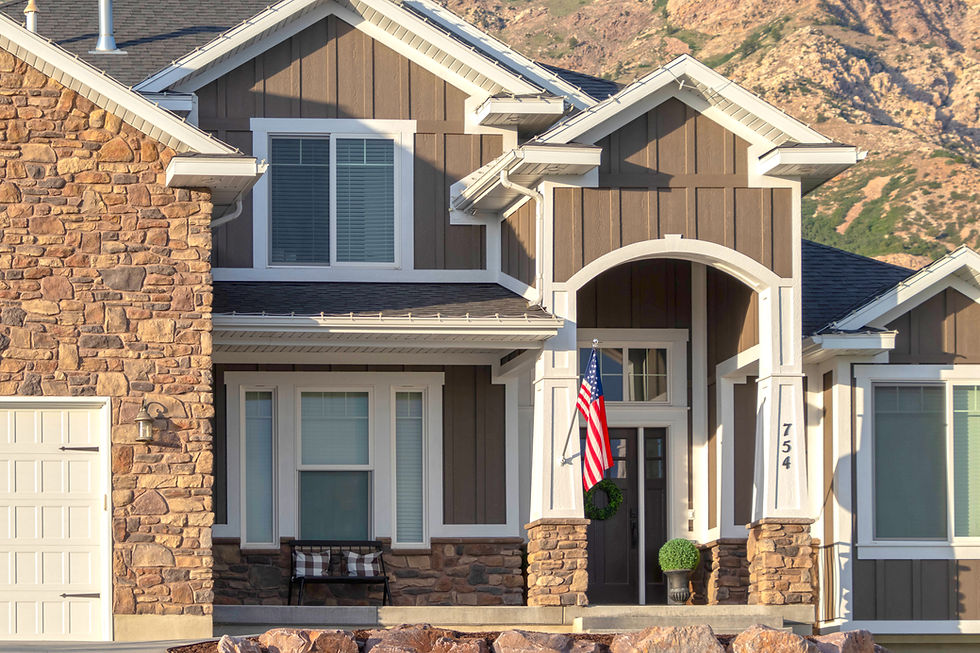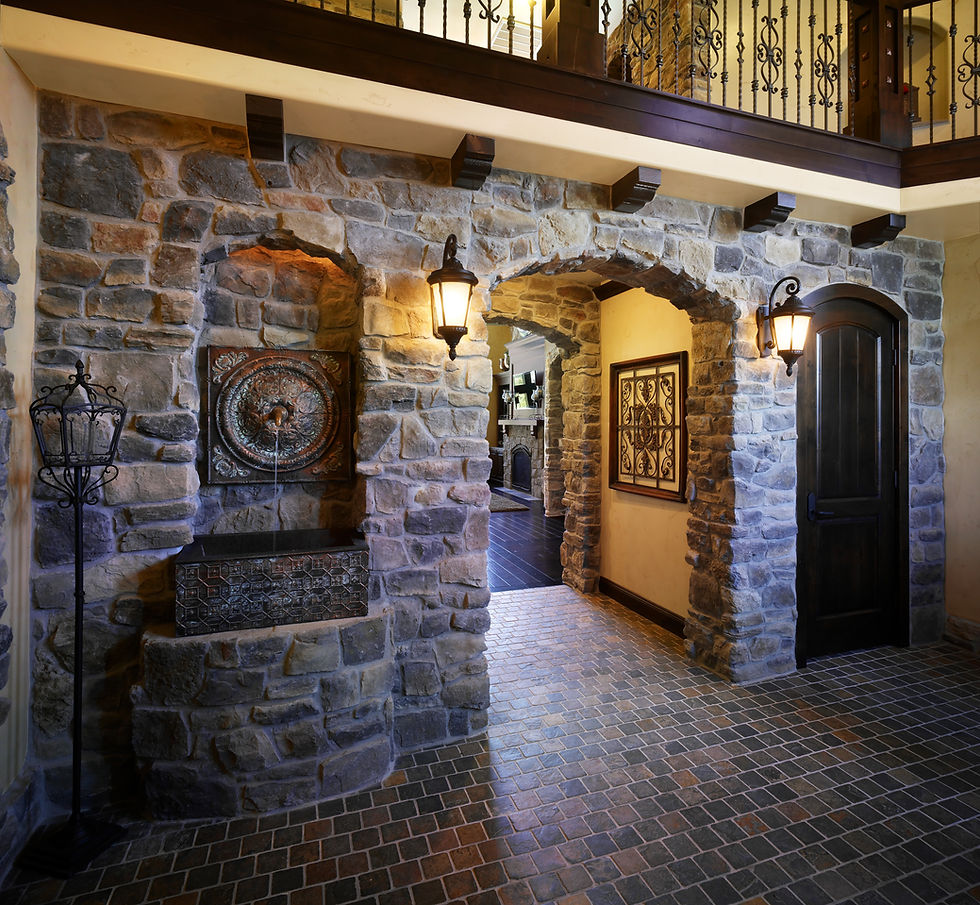Considerations for Stone Veneer Retaining Walls
- G.S. Harris Co., Inc.

- Jun 30, 2020
- 3 min read

Retaining walls are hard-working hardscaping installations. They're a type of hardscaping many homeowners usually don't think about until contractors tell them they need one. A retaining wall can do a lot for your property, especially if you finish it with a stone veneer.
Retaining Wall Purposes
The main purpose of a retaining wall is in its name — to retain, in this case soil. Therefore, retaining walls are utilitarian installations. The main reason contractors install retaining walls is to stop erosion in a sloped yard. If your yard is sloped, you'll have difficulty keeping the topsoil in place even with plantings.
Contractors also install retaining walls to create more usable space in a sloped yard. They level off the slope behind the wall for use as landscaping or additional hardscaping, such as a patio. They may even install a retaining wall on relatively level ground to elevate planting areas. Such a construction also improves drainage of your planting bed.
Retaining Wall Construction
Contractors have several methods for building retaining walls. Most modern-day walls have concrete and cinderblock cores.
To build the wall, contractors excavate the ground to lay the base for proper drainage. They use landscaping fabric to keep gravel in place around a drain, which provides a permeable base. They pour concrete and install rebar for stability before stacking the cinderblocks on top. They can stop there, but the end result is industrial in look. So, most homeowners finish the wall with veneer.
Veneers come in both brick and stone, either of which is suitable for a retaining wall. The basic process for both manufacturing and installing the veneer is the same, so the focus of this blog will be on stone.
Stone Veneer Process
Manufacturers have two choices for their veneers. One is to use natural stone. They start with the same stone contractors would stack to make an old-style wall. However, they slice the stones so they're only about one inch thick. The resultant stones are much easier to transport and install. However, they're not suitable as building blocks.
The other option is cast stone. Manufacturers use a mixture of cement, aggregate, and iron-oxide pigments. They pour the mixture into molds that resemble natural stones. During the manufacturing process, machines agitate the molds to disperse the color throughout the cast stones. For veneers, the cast stones are also about one inch thick.
Once the contractors have completed the retaining wall foundation, they prepare the surface for the veneer. This preparation typically involves applying building paper and lath to hold the stones in place. The contractors then apply mortar. They stack the veneer stones while pressing them into the mortar. Depending on the type of finished look you want, they may grout between the stones.
Stone Veneer Choices
For natural stone veneers, manufacturers use the typical stones you'd find for hardscaping, such as river stone, flagstone, slate, and granite. The type of stone you choose will impact its price, with marble being more expensive than fieldstone, for example. For cast stone, the manufacturers typically mimic the above stones in their designs.
You'll also get to choose the lay pattern of the stone veneer. River stone and fieldstones are round, so the contractors lay them in a scattered pattern. Ledgestone features square and rectangular stones that contractors lay similar to bricks. Ashlar is a larger version of ledgestone. Contractors can also use dimensional installations that let some of the stones jut farther than others.
While the retaining wall is a utilitarian structure, it must still work within the rest of your landscaping and hardscaping. If you have any other hardscaping nearby, the veneer should match or complement it. If not, look for a veneer that keeps with the style of your house. Otherwise, you can simply choose one that adds visual interest to your property.
Increase your usable space with a retaining wall finished in an attractive stone veneer. Harristone can help you choose the ideal stone veneer for any hardscaping project.








